Get Tech Tips
Subscribe to free tech tips.
Why Committees are Broken and How to Fix Them
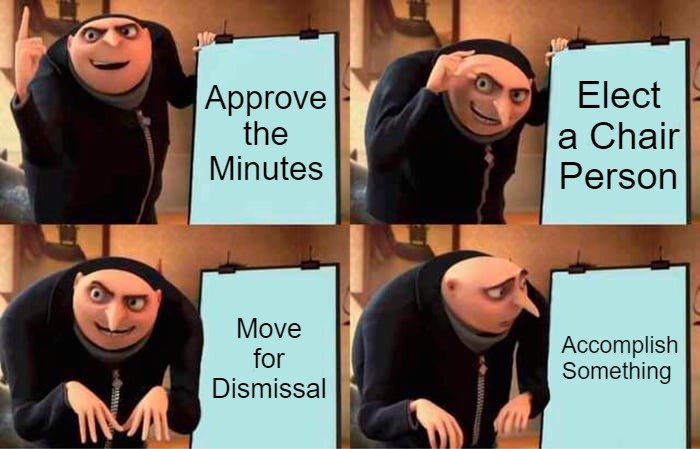
Many of us understand that we need to get involved in local trades education to prepare students for fieldwork and get more people to consider careers in the trade. One of the ways contractors can support educators is by getting involved with local trade schools and industry organizations. We can do that by attending meetings or joining trade schools’ advisory councils or committees.
The first time I was invited to one of those meetings, I was excited to be there. I walked into the meeting room and had to fill out a survey about the effectiveness of the program.
Do I really want to be honest? I’m handing it right back to the instructor, and he probably won’t like what I have to say. I’ll just go with my Google Reviews approach and list the positives.
The sign-in sheet came my way, and I anxiously awaited the meeting.
We started with the roll call. (What was the purpose of the sign-in sheet?) Okay, I’m sure this is standard procedure. It shouldn’t take long before we get the formal stuff out of the way and get to the meat of the discussion.
I was wrong.
We started by reviewing the minutes of the previous meeting, which I wasn’t part of. The board asked for a motion to approve the minutes, and somebody moved the approval. But wait! They needed someone to second the motion!
Then, we had to elect a chairperson. There was an awkward silence as we all looked at each other, waiting for someone to crack under pressure and raise their hand.
“Does anybody nominate anyone to be the chairperson?” Again, there was an awkward silence as we waited for someone to throw one of us under the bus.
The instructor got desperate. “The chairperson doesn’t have any real responsibilities. We already wrote the agenda. The chairperson just has to read it.”
One guy timidly raised his hand and said, “I’d be happy to do it.” (Maury determined that was a lie.)
Somebody had to make a motion to elect the chairperson, and another person had to second it. By the time we elected our chairperson, we had already burned through five minutes of the meeting.
Then we read through the mission statement of the organization. Again, we needed review and approval of that.
We finally got to the new business. Most of the new business was about the program’s efficacy—more or less the same stuff on the sheets we filled out before the meeting. Nobody added anything notable during the open discussion. Then, the meeting adjourned, which also needed a motion and a second.
I left the meeting thinking: Why do we do this?
Any form of open and innovative discussion was suffocated by formal procedures and the attendees’ discomfort with those procedures. Sure, nobody ever talked over anyone else, but at what cost?
History of Robert’s Rules of Order

Like many great inventions, Robert’s Rules of Order came about after an embarrassing failure. In 1862, a young man named Henry Martyn Robert had to preside over a church meeting. He did not know parliamentary procedures, and the meeting turned into full-on madness.
Robert decided to read up on parliamentary procedures to keep the attendees on their best behavior next time. Although local committees had set a few precedents, there was no formal rule for holding meetings. So, what did Robert do? He made his own set of rules.
Robert published his guidelines in the Pocket Manual of Rules of Order for Deliberative Assemblies in 1876. His manual was a huge success and was occasionally revised to fit the changing times. The guide had undergone several revisions throughout Robert’s life and was known by several names, including Robert’s Rules of Order Revised for Deliberative Assemblies. Although Henry Martyn Robert is long gone, we continue using his manual to this day, which was still in print during the 1970s.
Nowadays, we can find his guidelines online with just a Google search and refer to them as “Robert’s Rules of Order.” We use the rules in state legislative chambers, small committees, and even high-school clubs.
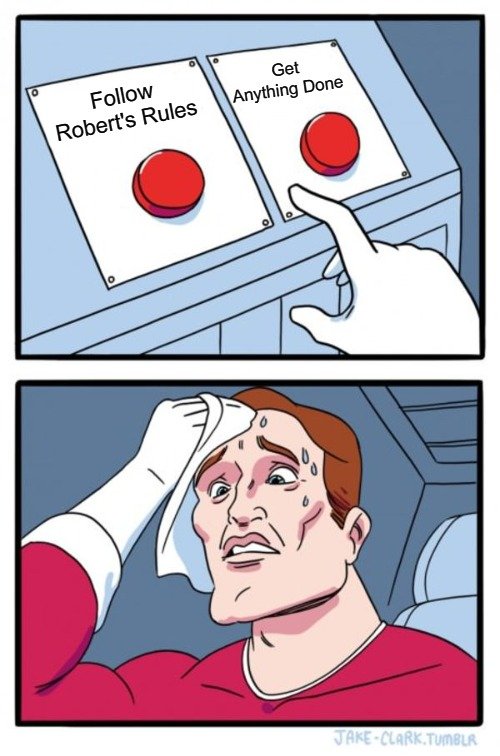
Why use Robert’s Rules of Order?
The main purpose of parliamentary procedure is to create structure in a meeting. When hundreds of people gather for an assembly, we need some rules to keep everyone in line and keep communication as relevant as possible. It’s pretty hard to get anything done if everyone shouts over each other or constantly changes the subject.
Robert’s Rules of Order allows a committee to focus on one order of business at a time. All discussion and debate will be related to one order of business until the original motion passes with a majority vote or fails. Motions can be amended, but the overall topic stays the same.
Meetings with a linear progression are easy to document. Imagine writing up a meeting report where the subjects change and get revisited several times over a half-hour. It would probably drive you nuts. Robert’s Rules of Order exist to protect the sanity of transcriptionists everywhere.
Then, we have to think about the benefits of parliamentary procedure when it comes to transparency and reduced liability. According to Robert’s Rules of Order, ordinary members are usually allowed to observe board meetings. When there is a clear, orderly process that allows everyone to watch, you build trust in committees and organizations. Executive meetings may not provide public access, so the accuracy of the minutes is crucial for limiting liability.
When large groups of people meet and public trust is at stake, it makes sense to have a strict set of guidelines. It’s also a good idea to review and approve the records for the sake of transparency and clarity.
But do those guidelines help for local advisory councils? I think Robert’s Rules of Order presents more challenges than solutions in small-scale meetings.
Modern Issues with Robert’s Rules of Order
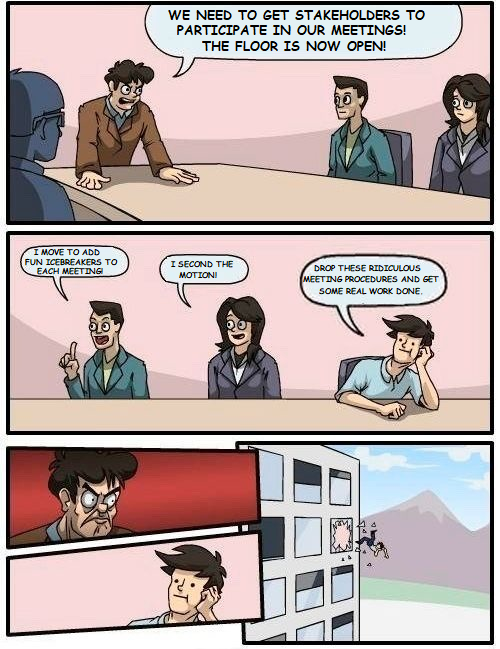
It’s a bit ironic that Robert’s Rules of Order were designed for efficient meetings, but the procedure sucks the efficiency and productivity out of small committee meetings. There are many reasons why Robert’s Rules of Order don’t work for trades education advisory councils and other similar bodies.
In cases like my story, people may be reluctant to participate in meetings if they aren’t familiar with the language used to structure the meetings. They may not understand what it means to “move” an issue or why we must “second” each motion. Many of the contractors who join trade school advisory boards spend their time training and working in the field. Parliamentary procedures add unnecessary obstacles for those meeting attendees and make it harder for them to communicate.
When you have that discomfort with the procedures, you get awkward silences, which take up even more time and stall meetings. Slow, detached meetings with stiff arcane language can deter stakeholders and leaders from participating in them. While those people will have some of the best ideas and most accurate accounts of what the industry needs, they simply don’t have the time to present those ideas and formally introduce, debate, amend, and vote on them. Combine a lack of stakeholder participation with stagnant meetings, and you won’t see much progress.
Feedback is what makes meetings dynamic and fosters real change. But if the meetings are already long and slow, is anyone really interested in feedback that’ll drag it out even longer? For people who spend so much time on their toes and working, the answer is no. Not to mention, in these advisory board meetings with instructors, any negative feedback is public knowledge, which can bruise some egos and cause conflict.
While large-scale meetings require procedures that focus on the majority rule to make any progress, we need to focus on the finer details and thoroughly discuss courses of action in trades education advisory groups. In small-scale committees like those, there needs to be a focus shift from procedure to participation. When individual participation and feedback are more important than a consensus, it only makes sense to look at alternative ways to run meetings.
But, how would we do it?
Taking a Leaf from Jeff Bezos’s Book

In 2018, Inc. published an article about Jeff Bezos’s policy banning PowerPoint presentations at Amazon executive meetings. Instead of projecting bullet points and stock images on a screen, Jeff Bezos makes his executives put together a narrative brief that everyone can read together at the start of a meeting. Everybody then discusses the content of the memo.
I believe meetings would be a lot more effective if we were to employ a similar structure. If we send out meeting materials ahead of time via email, there’s a slim chance that the attendees will read them ahead of time. Instead, we should allow some time for the meeting attendees to read and familiarize themselves with memos. Everyone can get on the same page at the meeting’s beginning and be prepared to discuss the new business.
While sitting in a room and reading quietly for a few minutes may seem boring, it's a heck of a lot more productive than starting a discussion without really knowing the facts or spending a ton of time going through flashy PowerPoint slides with little substance.
Using Modern Technology to Record Minutes
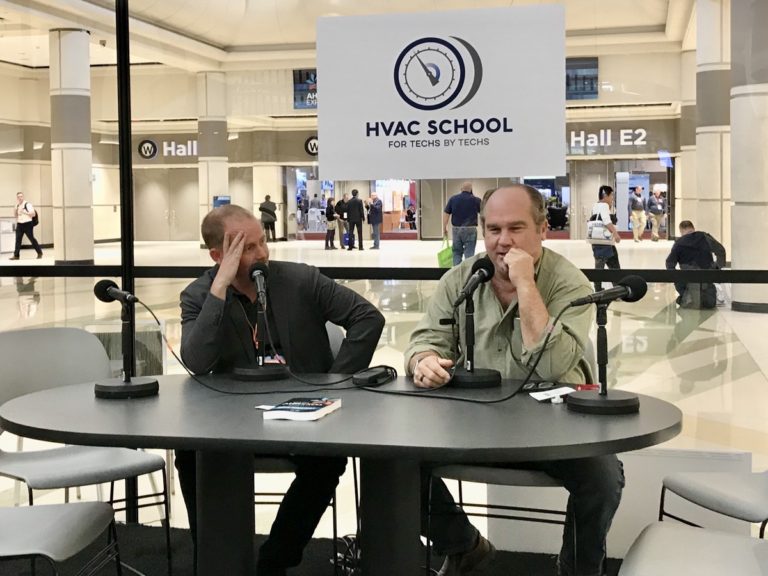
As you can tell, one of my biggest gripes with Robert’s Rules of Order is how much time we waste on roll call and reviewing minutes. With the technology available to us in all smartphones and tablets, we can shave time off all meetings by eliminating the need for roll call and minute review.
Back when we didn’t have a means of recording meeting minutes digitally, we absolutely needed a secretary or typist to write the minutes and verify them at the next meeting. But now that we have voice recorders or cameras on our phones and services like rev.com for transcriptions, we no longer need to record minutes traditionally for small assemblies. There is usually no need to strike anything from the record in small committee or advisory council meetings, so a video or audio recording should be fine.
We can also apply that technology to make meetings public knowledge and increase transparency. Approving the minutes is vital because it reduces the room for error in recalling what happened, but we have the technology to reduce the error margin to zero. Why not use that technology and save time?
Private, App-Based Chairperson Elections
Choosing a chairperson seems like a simple task, but so much goes into just that one decision.
In cases where we don’t already have an agenda, the chairperson will direct discussions, maintain order, and offer critical feedback. For this reason, in trade school advisory council meetings, it’s best to have an industry leader serve as the chairperson because they are more in touch with the needs of the community and the industry than someone inside the school system.
When you have a volunteer system, the best person for the job may not offer to lead the meeting, and the chairperson could be someone from the public school system who really doesn’t know much about the industry. As we saw in my story, nobody might step up, which wastes time and is just plain awkward. (After all, if you nominate yourself, people could think you’re a raging egomaniac. If you nominate someone else, you could look like a jerk for putting them on the spot.)
A private, app-based voting system would allow people to elect a chairperson without feeling pressured to vote or not vote for someone publicly. The person with the most votes could then choose to accept or reject the position. With the technology in place, this can take a matter of seconds.
We would want voting records and results to be public when they pertain to proposals regarding policies and curricula, but privately electing the chairperson allows people to vote honestly without worrying about hurting someone else’s feelings.
Focus on Group Discussions
While Robert’s Rules of Order allow room for debate and discussion, there is so much emphasis on orderliness that it’s difficult to get a dynamic dialogue going among the committee.
We need that dialogue if local industry leaders want to contribute to educational programs effectively. If we can’t create an engaging environment that focuses on solutions and values the contributions of people in the industry, we can’t make progress and bridge the gap between trades education and the field.
I would like to see “committees” allow room for attendees to form small, informal groups of masterminds. These groups embrace free-thinking, creativity, and open discussion, even at the risk of creating a little chaos. But hey, if a bit of disorder is the cost of participation, I’ll gladly take it.
So, I’m creating new rules for committees that don’t suck.
Bryan’s Rules for Productive Anarchy
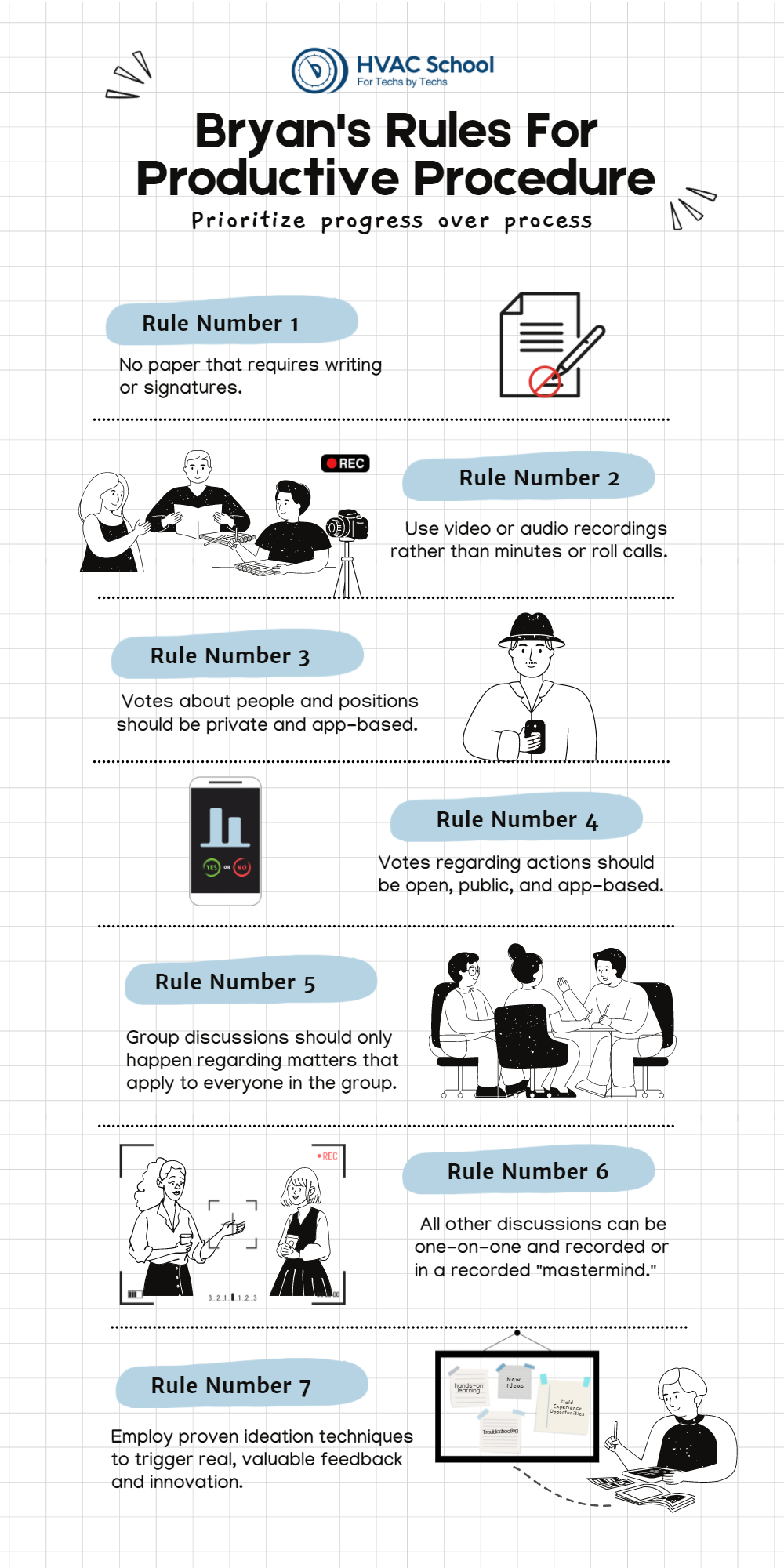
Small-scale meetings, especially those that tradespeople will attend, need to be outcome-oriented and efficient. Since the rules that allow larger meetings to be efficient don’t work for small committees with several blue-collar members, we need to streamline the unavoidable procedures and allow room for open but relevant discussions.
1. No paper that requires writing or signatures.
While I think it’s okay to hand out paper briefs for reading purposes only, there should be no forms to fill out or documents to sign.
If you require people to sign a document, you create a bunch of administrative tasks on the back end. You have to scan the document and make sure it gets filed into the appropriate place. There is also no need to fill out forms ahead of time if we are going to be discussing the issues on said form during the meeting.
Going paperless on the actual documentation side of meetings will be a huge time saver.
2. Use video or audio recordings rather than minutes or roll calls.
Again, there is no need for minutes or roll calls in this day and age. We can keep video evidence of who was present at the meeting and what occurred.
We can save quite a bit of time if we ditch the formal procedures and use technology to confirm the attendees, topics discussed, and proposals accepted or denied.
3. Votes about people and positions should be private and app-based.
Because our opinions and decisions affect other people, you potentially limit participation when you make voting records about people and decisions public.
To get more participation and honest decisions, we can make election votes private and automate the process with an app.
4. Votes regarding actions should be open, public, and app-based.
Open and public voting allows everyone to see who voted for what. We essentially keep the transparency offered by Robert’s Rules of Order but eliminate the need for motions and seconds. As with the private chairperson voting, using an app to record votes is more efficient than counting hands raised or “ayes” and “nays.”
5. Group discussions should only happen regarding matters that apply to everyone in the group.
We’re all probably familiar with the frustration of being in a meeting and having someone bring up an issue that only applies to three people in the room. That’s inefficient, annoying, and has no place in a meeting where we’re trying to improve connections between the industry and education.
To keep discussions on track, Forbes contributor Jennifer Helene recommends defining objectives and outcomes. We can define those terms at the start of the meeting or incorporate them into pre-meeting briefs. That way, the meeting attendees can know the group objectives. If they're aware of common goals, they'll be more likely to keep their concerns relevant to everyone in the group.
6. All other discussions can be one-on-one and recorded or in a recorded “mastermind.”
Piggybacking off the rule I just explained, special concerns can be addressed more effectively in “mastermind” groups with the affected people or with the chairperson in private.
When we keep unique concerns limited to the people who have to worry about them, we can run meetings more efficiently by only focusing on the issues that matter to everyone. We can also develop solutions tailored to the people involved by limiting the discussion to the people who have to deal with the problem. You also don’t cut off attendee engagement by introducing issues that other people don’t care about.
7. Employ proven ideation techniques to trigger real, valuable feedback and innovation.
I had the pleasure of attending a meeting led by Jason Born (yes, that is his real name). He is the innovation lead for the Emerson Helix.
Jason asked open questions and had us write answers and ideas on big sticky notes. He then dug deeper into the words we used to find insights and foster real, vulnerable conversations.
It was INCREDIBLE and highly beneficial.
In the words of Lauren Landry at Northeastern University, ideation techniques include brainstorming and prototyping to generate new ideas creatively.
We can use structured ideation techniques like Method 6-3-5 (six people each write down three ideas in five minutes and pass them on to the next person to build on the ideas) or storyboarding. But it’s more realistic for us to put sticky notes on the board, use analogies to communicate our needs or solutions, think about “Worst Possible Ideas,” or use other informal forms of brainstorming and idea connection.
Even if a contributor has to give negative feedback about a program or proposal, it can come about constructively and inspire alternative options when a group can use ideation techniques to develop solutions.
Ideation can be particularly useful in one-on-one or mastermind communications. The small groups in those environments can allow ideation to happen organically without getting too strung out or overwhelming from too much input.
8. Honor individuals for their specific contributions rather than for simply showing up.
Back in the day, it was an honor just to be invited to be part of a committee. Nowadays, that’s not really the case. We are much more results-driven and want to know that our efforts to change the status quo are worthwhile.
If we want to increase participation and get good ideas flowing, we need to acknowledge each individual’s contributions and find ways to thank the contributors. If we can honor the contributions of others by making spotlight social media posts, writing an article about their ideas, or even taking them aside and saying “thank you,” people will feel that their efforts really are worthwhile and that they’re not wasting their breath or their time when they share their ideas with the committee.
We still want people to show up, but the real goal is to improve processes through feedback and innovation, not just to get a quorum and check off a box. Voices and minds are more important than bodies if we want committees to be productive and make an impact.
The “Why” Behind This Fairly Insane Article
I don’t deny the usefulness of Robert’s Rules of Order in the appropriate time and place.
I just don’t think the modern advisory council or committee meeting are the right venues for parliamentary procedure, especially if people who don’t have a background in politics or formal leadership are helping make decisions.
We live in an age where efficiency, innovation, and collaboration are key to accomplishing tasks. To promote those three things, I think we need to make the meeting room more casual and open for discussion. We need to move away from the idea of following a procedure because it worked in the past.
The past is valuable, interesting, and important. We watch documentaries and visit museums to honor and learn from the past. Some of my favorite podcasts are Hardcore History by Dan Carlin and The Way I Heard It, Mike Rowe because they make history and stories from the past come alive.
History and tradition are awesome. Robert’s rules are super interesting.
I just strongly assert that Robert and his Rules of Order belong in a museum to be honored, not in the modern advisory council or committee meeting.
—Bryan Orr
(Editing and writing assistance by Emily Gutowski)
References:
“Henry Martyn Robert.” Encyclopedia Britannica. 1998. https://www.britannica.com/biography/Henry-Martyn-Robert
Dam, Rikke Friis and Siang, Teo Yu. “Introduction to the Essential Ideation Techniques which are the Heart of Design Thinking.” Interaction Design Foundation. 2020. https://www.interaction-design.org/literature/article/introduction-to-the-essential-ideation-techniques-which-are-the-heart-of-design-thinking
Gallo, Carmine. “Jeff Bezos Banned PowerPoint in Meetings. His Replacement Is Brilliant. Inc. April 25, 2018. https://www.inc.com/carmine-gallo/jeff-bezos-bans-powerpoint-in-meetings-his-replacement-is-brilliant.html
Landry, Lauren. “How Ideation Techniques Can Solve Challenging Business Problems.” Northeastern University. December 1, 2017. https://www.northeastern.edu/graduate/blog/ideation-techniques-impact-on-business/











Comments
To leave a comment, you need to log in.
Log In